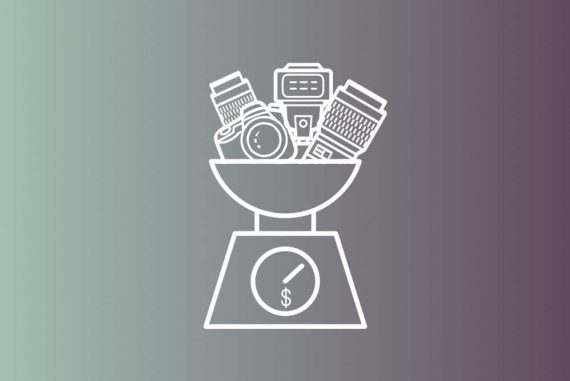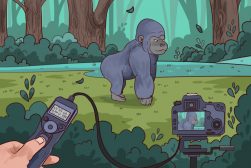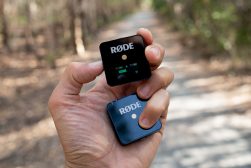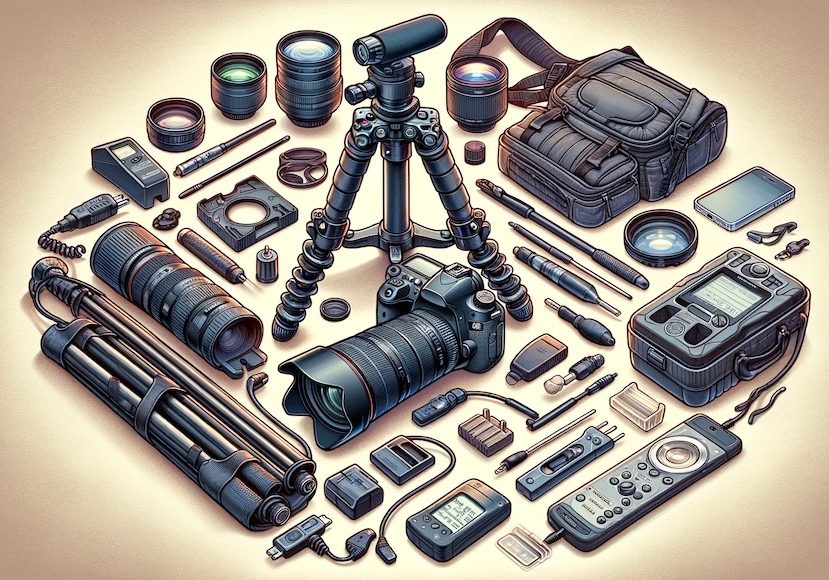
13 Useful DSLR Accessories To Use in 2024
Explore the top 13 DSLR accessories for 2024, enhancing your photography with must-have gadgets for comfortable shooting and impeccable shots.
This guide will take you through the best DSLR accessories on the market at the moment.
Once you have your DSLR you can, of course, start shooting. But to make your life more comfortable, and more convenient, you’ll want to get some accessories.
In this article, I’m going to assume you have the absolute basic camera accessories for a DSLR setup (the camera itself, SD Cards, tripod, camera bag, and extra batteries), but you aren’t sure what else you might need.
So, what are the most useful accessories for DSLR cameras?
What Are the Best DSLR Accessories in 2024?
1. Speedlight
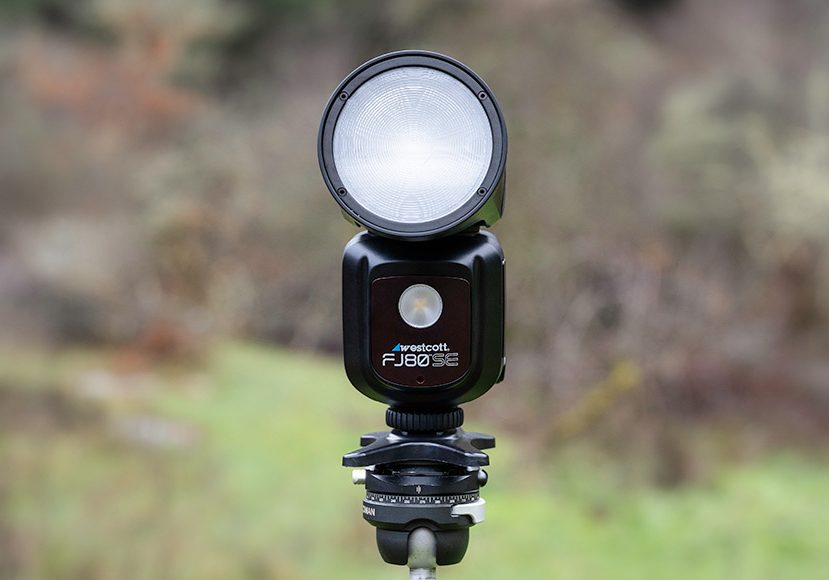
Credit: Teryani Riggs
A speedlight is an essential accessory for photographers.
As it provides an additional light source that you control, it gives you versatility in varied shooting conditions.
You can use a speedlight or on-camera flash as a fill light, to illuminate a dimly lit room, or for backlit portraits to make sure that your subject’s face is exposed properly.
They’re also useful for adding a creative or editorial-style touch to your images.
FJ80-SE Universal 80Ws Speedlight
This is a new beginner-friendly speedlight from Westcott, designed to compete with the Godox below.
It’s compatible with all the major manufacturers (Canon, Nikon, Fujifilm, etc) and also for use with the Canon RT flash system.
Sony users should note that, for them, the speedlight only works in Manual Mode.
It’s powerful, portable, and has everything you’d need and expect from a speedlight: good battery life, a user-friendly interface, and all the flash modes – TTL, manual, high-speed sync, and front- and rear-curtain sync.
[Amazon | Westcott]
Godox V1-C
This is a very popular roundhead speedlight from Godox.
It’s slightly less powerful than the Westcott model above, at 76W, but I doubt you’d notice the difference.
Like the Westcott, it’s fully compatible with all the major brands, and it works across all of them with full functionality.
It has all the modes you’d expect, the same as the Westcott, and offers 480 full-power flashes on a single charge, and a recycling time of just 1.5 seconds.
[Amazon | B&H]
To find out more about brand-specific options, visit this article on the best camera flashes.
2. Remote Flash Trigger
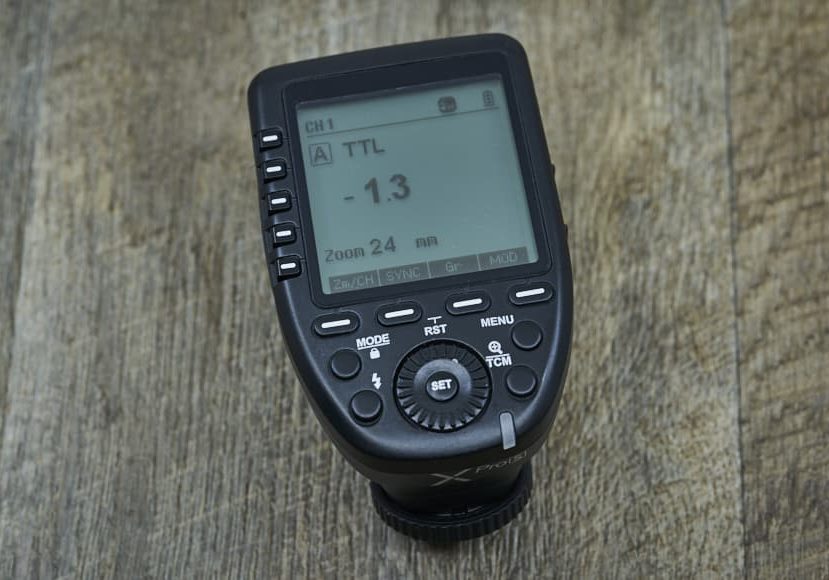
Credit: Athol Hill
A remote flash trigger helps you expand your creative possibilities.
They allow photographers to trigger off-camera flashes wirelessly, enabling precise control over lighting setups.
With a remote flash trigger, you can really get creative and experiment with different lighting techniques and setups, which will bring your images to the next level.
Westcott FJ-X3 M Universal Wireless Flash Trigger
This is especially for those using the Westcott and Canon RT flash systems, but it’s a universal device, so it’s compatible with all the major brands (for Sony you need an adaptor).
You can use it to control all of your flash’s settings, by way of the user-friendly interface.
It’s also possible to control this wireless flash trigger from an Android or iOS app. Meta.
[Amazon | Westcott]
Godox XProC Wireless Flash Trigger for Canon Cameras
This a great device and, as a Canon user, I have one myself. (Read our full review here.)
It’s very similar to the Wescott above in terms of its functionality, but it’s specifically made for those who use Canon flashes, and it enables seamless communication between your Canon flash and the trigger.
Bear in mind, though, that this is half of what you need. You need a Godox receiver attached to your flash for the trigger to communicate with.
[Amazon | B&H]
Godox XProN Wireless Flash Trigger for Nikon Cameras
Exactly the same device as above, but made for Nikon users.
[ Amazon | B&H]
3. Wireless Remote Control
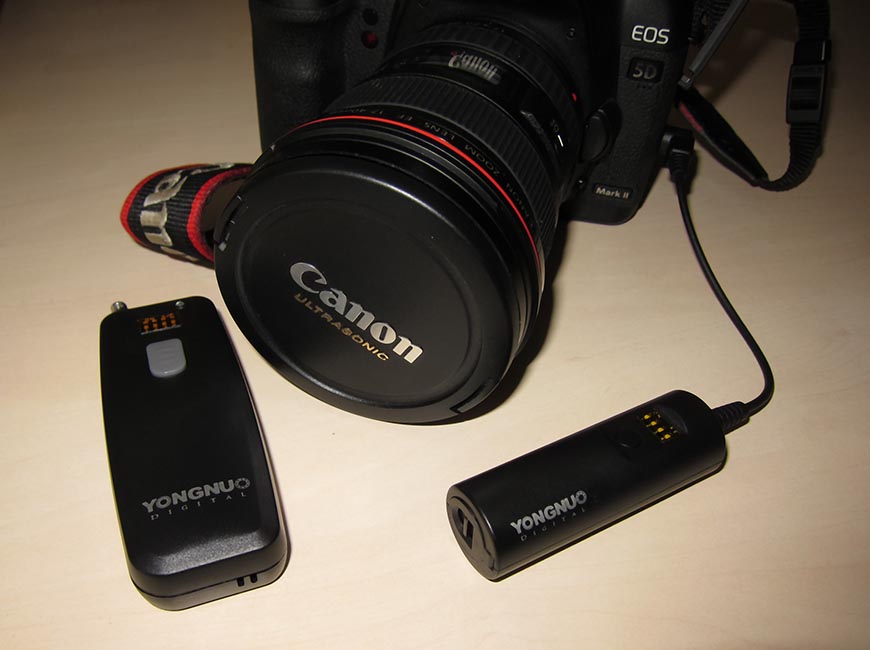
Credit: Keith Williamson, CC BY 2.0 DEED, via Flickr
A wireless remote control enables the hands-free operation of your camera.
It’s ideal for taking self-portraits or group shots and also helps you take long exposures (for example, during astrophotography) without any impact from hand shake.
It’s also the kind of thing that, for example, sports photographers find useful. They can put a camera where they’re not allowed to stand, for instance, directly behind the goal (if they’re shooting football), and still be able to control their camera settings and take photos.
Canon RC-6 Wireless Remote Controller
Designed for Canon EOS cameras, this enables you to wirelessly operate your Canon camera’s shutter, either for photos or video.
It has an operating range of 16 feet.
[Amazon | B&H]
Nikon ML-L3 Wireless Remote Control
This is very similar to the Canon device above. It has the same functionality and identical range but for Nikon cameras.
[Amazon | B&H]
4. Battery Grip
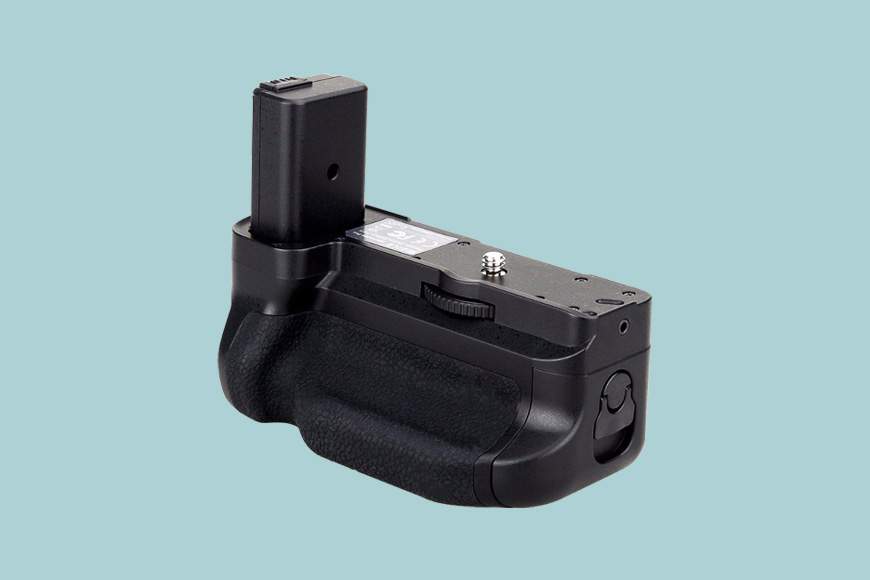
A battery grip contains extra batteries, increasing your camera’s power supply.
It’s essential for photographers who shoot for long durations, not only for the extra juice but because battery grips also provide a comfortable, ergonomic grip for vertical shooting.
That gives you more flexibility when it comes to composition, and also helps prevent hand fatigue.
Canon BG-E14 Battery Grip (for EOS 70D, 80D, and 90D Cameras)
Put two lithium-ion batteries in here, or six AA batteries and you’ll greatly extend your shooting time.
It’s robustly built and ergonomic, and despite it being a simple device, it still packs in the features.
It includes a second shutter release button (for vertical shooting), a main dial, a multi-controller, an AF point selection button, an AE/FE lock button, an AF start button, and a multi-function button.
[Amazon | B&H]
Neewer Vertical Battery Grip (for Canon EOS 90D 80D 70D Cameras)
This is marketed as a direct competitor to the Canon battery grip above.
It does the same thing and has the same functions but for less than half the price.
[Amazon]
Neewer Vertical Battery Grip (for Canon EOS 1100D /1200D/1300D/ Rebel T3/T5/T6)
This is a more basic battery grip for Canon’s entry-level DSLRs.
You can only use it with lithium-ion batteries, and its only function (beyond extending shooting time) is the extra shutter button for vertical shooting.
[Amazon | B&H]
5. Camera Rain Jacket
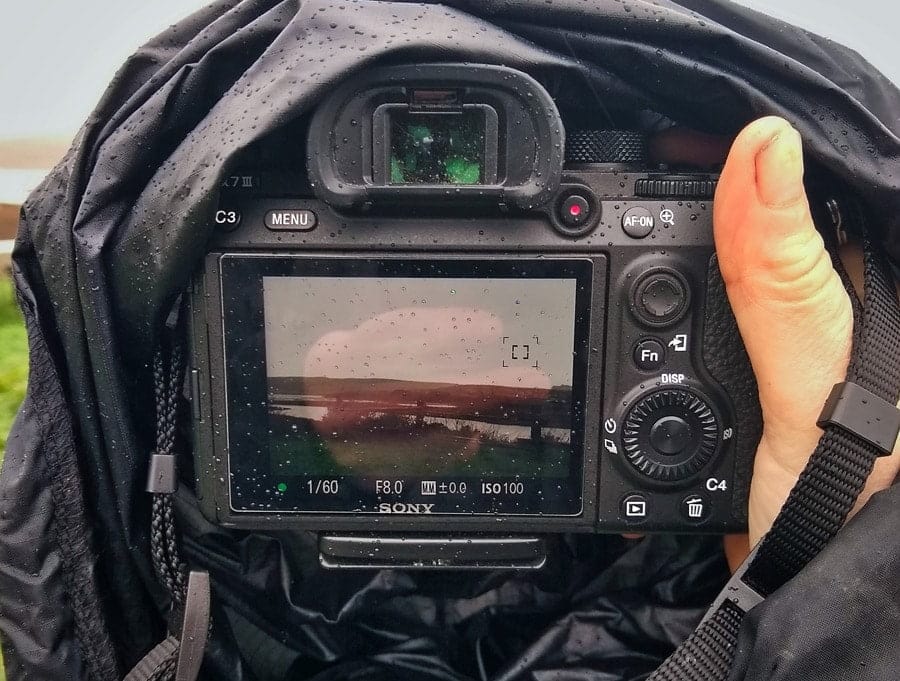
Credit: Teryani Riggs
A camera rain jacket is vital if you shoot in challenging weather conditions and want to protect your camera gear.
It is literally a small raincoat that fits around your camera body and lens and shields them from moisture, rain, dust and other debris.
So, it gives you peace of mind.
Think Tank Photo Emergency Rain Covers
A very well-made piece of equipment that packs down into a small pouch and comes in two sizes: one for 24-70mm lenses and below, and one for 70-200mm lenses.
It cinches around the end of the lens and around the bottom of the camera and is held in place by a hot-shoe mount.
It also has an oversized window so you can easily see your screen and all the controls.
[Amazon | B&H]
Ruggard Fabric Rain Shield
Slightly cheaper than the Think Tank offering, this is a one-size-fits-all rain jacket suitable for lenses up to 15 inches long and 8 inches in diameter.
It’s portable, made of water-resistant nylon, and it is secured by bungee cords around the lens and the camera’s base.
[Amazon | B&H]
6. L-Bracket
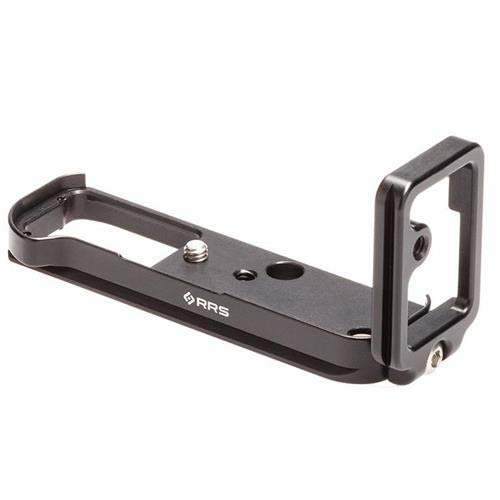
An L bracket is an accessory for photographers with DSLR cameras who shoot on tripods.
It allows seamless switching between horizontal and vertical orientations while making sure that the composition and framing remain virtually the same.
It gives you a stable platform that allows you to almost instantly change your view.
3 Legged Thing Lexie Universal Multifunction L-Bracket
Well-designed, lightweight yet robust, this L-Bracket has an extendable base, so it can be adjusted to fit any size of the camera.
It’s Arca-Swiss compatible, and it has a handy cutout in the vertical aspect through which you can feed cables for tethering or other functions.
It also doesn’t hinder access to any battery compartments or memory card slots.
[Amazon | B&H]
Really Right Stuff MC-LS Universal L-Bracket
This is very similar to the 3 Legged Thing, although it’s more costly.
It’s highly adjustable, so can be made to fit any camera, and that adjustability also allows for movement to help it adapt to a range of positions of side ports, cable jacks, and LCD screens, so it doesn’t get in the way.
[B&H]
7. Camera Screen Loupe
A camera screen loupe gives you the best chance to get accurate compositions and focus in outdoor shooting environments.
It fits over the camera’s LCD screen, shielding it from bright light and also magnifying the screen.
You get more precise framing and focus, and you can be more confident of your exposure, thereby getting better images.
Hoodman H32MB HoodLoupe Camera Viewfinder
This can fit LCD screens of up to 3.2 inches, and has a +-3 diopter, so you can adjust it to your vision.
[Amazon]
8. Focusing Screen Grid
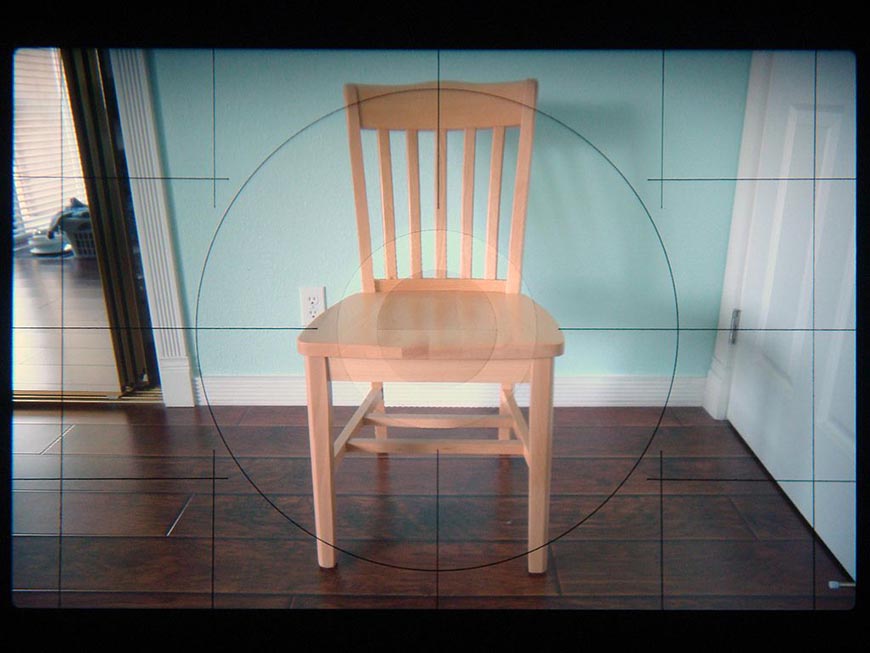
Credit: John Loo from Sunnyvale, USA, CC BY 2.0, via Wikimedia Commons
A focusing screen grid helps you get precise composition and alignment for your images.
It can, for example, provide visual aids such as grids and lines, allowing you to make sure everything is aligned properly before pressing the shutter.
Using a focusing screen grid can help you get well-balanced, visually pleasing photographs.
Canon Eg-D Interchangeable Focusing Screen
This screen can be slotted inside your Canon body and gives you three etched horizontal lines and five vertical.
These show up in your viewfinder and help you align everything perfectly in-camera.
[Amazon | B&H]
Specialty DSLR Accessories
As we’ve already looked at the more common accessories for DSLRs, let’s now take a look at some of the more niche varieties for specific creative needs.
9. Dolly Rail (Filming, Panorama and Timelapse Photography)
If you’re filming footage or making time-lapses, a dolly rail is indispensable.
It enables smooth and precise tracking shots and cinematic sequences and gives your footage a stable, fluid, professional feel.
GVM Motorized Camera Slider
A lightweight yet robust motorized slider to help you get that silky smooth footage.
It’s highly adjustable, compatible with all the major brands, and has a silent motor that won’t interfere with your video’s audio.
Its battery will allow 8 hours of use, and it also has some automatic modes to facilitate tailor-made and simpler filming.
[Amazon | B&H]
10. Indexing Rotator (Panoramas)
An indexing rotator gives you the ability to precisely measure and take the multiple images necessary to create a panorama.
It takes the guesswork out of panoramic composition and lets you create images with minimal distortion.
Sunwayfoto DDP-64SI and DDY-64I Indexing Rotator Combo
A handy piece of equipment that’s designed to help you create both horizontal or spherical panoramas.
It’s lightweight, small, Arca-Swiss compatible, with an integrated bubble level and lubricated bearings for smooth rotation.
[Amazon | B&H]
11. Plant/Tool Clamp (Macro Photography)
If you’re a macro photographer shooting at high magnifications, you need all the help you can get.
A plant/tool clamp is a highly adjustable accessory that holds delicate objects still. It sometimes comes with other parts that can help you position them, such as a reflector.
Wimberley Plamp
One end of this clamps onto, for example, your tripod leg, and the other end (at the end of a flexible 23-inch arm) holds whatever needs holding still.
The clamp is designed to hold delicate objects without damaging them.
[Amazon | B&H]
Wimberley Plamp Stake
This stake can be driven into the ground and used to hold the Wimberly Plamp.
So, it’s particularly useful when you need to hold something still that’s far from your camera or position a reflector to better illuminate a scene.
[Amazon | B&H]
12. Shutter Huggers (Children’s Photography)
When you’re photographing children, you need something to capture and hold their attention.
Shutter huggers are playful designs that wrap around your lens, help to engage young subjects, and make them smile.
Shutter Huggers Monkey
This will fit lenses up to 90mm in diameter, and it looks like a monkey.
[Amazon | B&H]
Shutter Huggers Giraffe
This is the same as the monkey, except that it’s a giraffe.
[Amazon | B&H]
13. Dot Sight (Bird Photography)
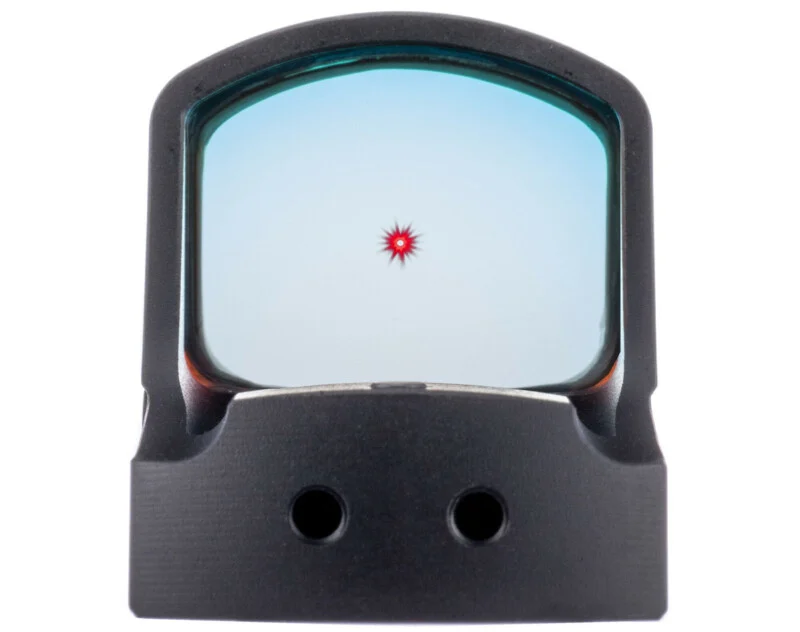
If you shoot in fast-paced shooting environments like bird or wildlife photography, this is a must-have accessory.
It is a light-aided sighting aid that makes your camera quickly lock focus on a moving subject.
You get faster and more precise framing while ensuring that you don’t miss any crucial moments.
Olympus EE-1 Dot Sight
Slap this on your camera’s hot shoe, and you’ll be getting pin-sharp bird photos in no time.
It has a centre-aiming dot (of adjustable brightness and position) that quickly locks onto and tracks moving objects.
It’s compatible with any camera.
[Amazon | B&H]
Camera Stabilizer (Video)
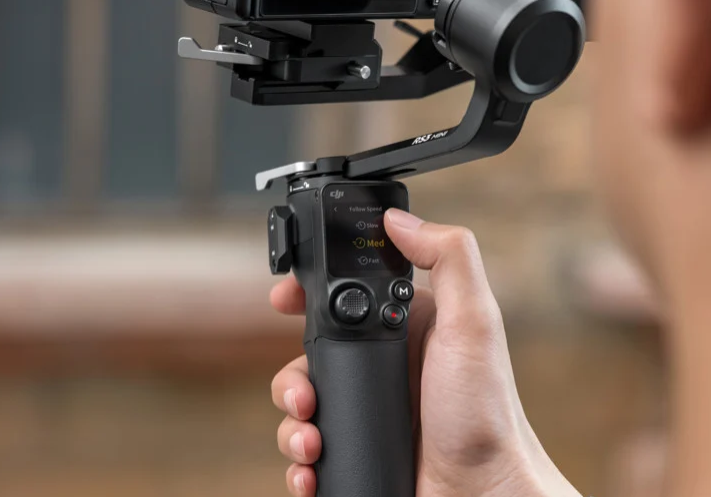
Credit: Stephan Jukic
When you’re shooting moving images, anything that increases stability is a great help.
A camera stabilizer can minimize unwanted camera movements and vibrations and ensure steady shots.
And that enhances the overall quality of your videos.
DJI RSC 2 Gimbal Stabilizer
Quite pricey, but compact, well-designed, and compatible with most cameras from the major brands.
It has good battery life, allowing for 14 hours of run time, and a built-in 1-inch OLED screen that makes it a breeze to use.
[Amazon | B&H]
SMALLRIG VersaFrame DSLR Camera Cage
This is made for medium-sized Canon and Nikon DSLRs and some other small cameras.
It’s durable and easy to use. When in place, it provides protection, grip, and a host of mounting points for other video-making accessories.
[Amazon | B&H]
Which DSLR Accessories Are a “Must Have”?
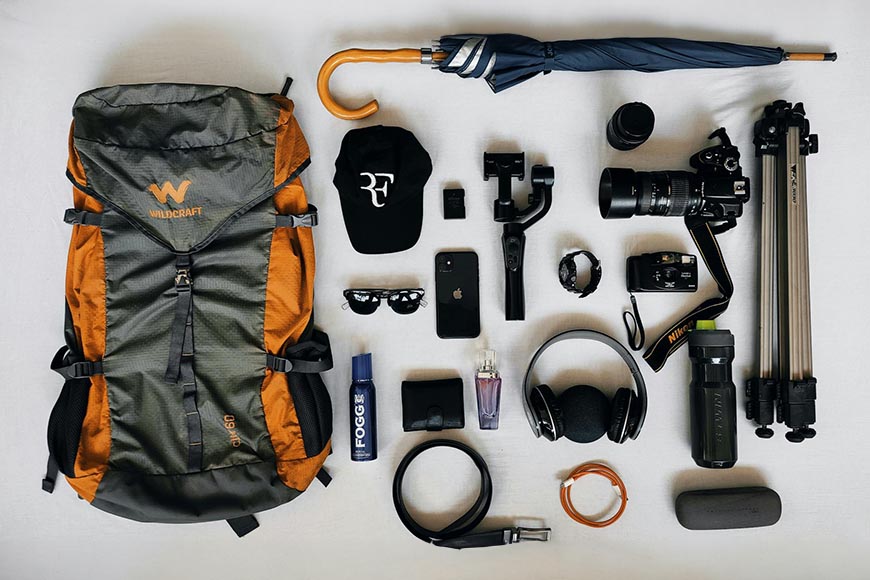
Credit: Shafeek K
The DSLR accessories you need will very much depend on your photography goals, preferences, and shooting style.
But, there are a few DSLR accessories that you really shouldn’t be without. Some have already been mentioned in this guide, and some have not.
You need a memory card reader to get those images onto your computer. Spare batteries are also a must.
The next essential item is a good camera bag. Of course, we’ve assumed in this article that you already have a camera bag, but it’s important to think carefully about the camera bag you have.
The bag I started out with is not the bag I have now. Some beginner camera bags are good for a short time, but if you’re serious about photography, you need a good camera bag.
This means one that is designed specifically for photographers and specifically to help you do the kind of photography you want.
It needs to fit all of your gear and have padded compartments to protect it during travel or shoots.
(Check out our Guide to the Best Camera Backpacks and Guide to the Best Camera Sling Bags for some killer options.)
You might also like to add a camera strap for more comfortable shooting.
An external flash is also essential. It adds another layer of versatility to your kit and will help you take control of and improve the lighting in various shooting conditions.
Again, we’ve assumed in this article that you already have a tripod, but it’s a similar thing to the bag. Often the tripod we get first is not very good, but you need a good one for taking stable shots, long exposures, and self-portraits.
The better it is, the safer it’ll keep your camera, too, and it’s also likely to be lighter and more portable.
So, look at the tripod you have, and ask yourself, is it good enough?
A remote shutter release (or wireless remote control) is a must-have, as it enables hands-free shooting, and also minimizes camera shake, which leads to sharper images.
For your lenses, you need at least one UV filter per lens to create a protective barrier between the elements and your precious glass and to protect it from any knocks.
You should also get a lens cleaning kit, just so you don’t clean your lens with a t-shirt or something. Do it properly.
Finally, there’s the battery grip. With this, you get increased battery life and also a comfortable (horizontal and vertical friendly) grip for extended shooting sessions.
FAQs about DSLR Accessories
What are the best DSLR accessories for beginners?
To be honest, a beginner needs to have the DSLR accessories outlined in the ‘Must-Have Accessories’ section above.
They are the bare minimum.
So, you need lenses, a memory card reader, an external flash, a UV lens filter, a lens cleaning kit, a wireless remote control, and a battery grip.
What’s the best DSLR accessories kit?
There are a lot of DSLR accessory kits out there; you just need to choose the right one.
Many of them are brand-specific (which makes sense), so you need to research the accessory kits that your manufacturer offers or third-party kits that are compatible with your camera brand.
There are also accessory kits made for specific kinds of photography, so look into those, too.
For example, there are kits for videographers, content creators, and travel photographers, to name a few.
What DSLR accessories do professionals use?
In this way, professional photographers are the same as beginners.
Most professional photographers use the ‘must-have’ DSLR accessories as a bare minimum (and in some cases, it may be all they’ll ever need), and any other accessories they use will be specific to the type of photography or videography they are pursuing.
While they do use the same accessories as beginners, it’s also worth pointing out that the DSLR camera accessories they use will normally be the most expensive versions of those accessories.
Professionals need to make sure that none of their gear lets them down and stops them from doing their work, and accessories are no different.
They need the ultimate in durability and reliability.
Is a right-angle viewfinder worth it?
Yes, they can be worth it for photographers who frequently shoot at awkward angles, require greater flexibility in their shooting positions, or like the more old-school feel of a right-angle viewfinder.
With one, you can shoot from a low angle without straining your neck or contorting your body.
They’re also convenient for macro photography and candid street photography – you can shoot more discreetly if you’re able to hold your DSLR camera at waist level while composing your shot.
But, they are an added expense and extra bulk for your bag, so you need to consider it carefully.
Are camera cages necessary for good video footage?
No, they’re not.
I’m sure there are plenty of people making bad-quality video footage while using camera cages.
This is another way of saying that it’s not the camera gear you do or do not have, it’s your eye that will determine how good your footage is.
That being said, a DSLR camera cage will give you peace of mind when shooting footage, as it adds another layer of protection to your gear.
Also, many DSLR camera cages allow you to add other accessories to and expand your shooting rig, which will give you more versatility, and therefore enhance the footage you’re able to take.






